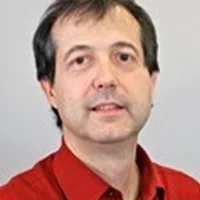Resonant absorption of a photon by bound electrons in a solid can promote an electron to another orbital state or transfer it to a neighboring atomic site. Such a transition in a magnetically ordered material could affect the magnetic order. While this process is an obvious road map for optical control of magnetization, experimental demonstration of such a process remains challenging. Exciting a significant fraction of magnetic ions requires a very intense incoming light beam, as orbital resonances are often weak compared to above-band-gap excitations. In the latter case, a sizeable reduction of the magnetization occurs as the absorbed energy increases the spin temperature, masking the non-thermal optical effects.
Here, using ultrafast X-ray spectroscopy, this work is able to resolve changes in the magnetization state induced by resonant absorption of infrared photons in Co-doped yttrium iron garnet, with negligible thermal effects. This work finds that the optical excitation of the Co ions affects the two distinct magnetic Fe sublattices differently, resulting in a transient non-collinear magnetic state. The present results indicate that the all-optical magnetization switching (AOS) most likely occurs due to the creation of a transient, non-collinear magnetic state followed by coherent spin rotations of the Fe moments.
Contact
Dr Urs Staub
Microscopy and Magnetism Group
Paul Scherrer Institute, Forschungsstrasse 111, 5232 Villigen PSI, Switzerland
Telephone: +41 56 310 44 94
E-mail: urs.staub@psi.ch
Original Publication
Transient non-collinear magnetic state for all-optical magnetization switching
S. Parchenko, A. Frej, H. Ueda, R. Carley, L. Mercadier, N. Gerasimova, G. Mercurio, J. Schlappa, A. Yaroslavtsev, N. Agarwal, R. Gort, A. Scherz, A. Zvezdin, A. Stupakiewicz and U. Staub
Advanced Science 10, 2302550 (2023)
DOI: 10.1002/advs.202302550

